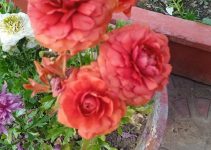Hyssop
Hyssopus officinalis
An evergreen, bushy perennial herb, hyssop produces upright stems with small white, lavender, or blue flowers in summer. It grows up to 2 feet tall and makes a good plant for edging and containers. Although this plant is not closely related to anise hyssop, both plants attract bees, butterflies, and hummingbirds.
Light: Part sun, Sun
Type: Herb, Perennial
Height: 1 to 3 feet
Width: 12-15 inches wide
Flower color: Blue, Purple, White
Seasonal features: Summer bloom
Problem solvers: Drought tolerant
Special features: Attracts birds, Cut flowers, Low maintenance
Zones: 4-9
Growing hyssop
Hyssop loves hot, strong sunlight and plenty of it. It needs well drained soil and likes dryer conditions. If you have a rocky spot that bakes in the afternoon sun, it’s probably a good location for a hyssop bush as long as you loosen the soil well and add some sand. Growing to about two and a half feet tall and 15 inches across, hyssop has narrow, upright, woody stems.
Plant seedings two feet apart, and halve that if you’d like to train your hyssop plants into a border hedge. As herbs go, hyssop is one of those reliable performers season after season. The plant gets rangier and woodier as time goes by, so plan on replacing plants every four years or so.
Propagate Hyssop
Propagate hyssop by starting seeds indoors eight weeks before the last frost date in your area. You can also create new plants easily by root division in fall.
Harvesting Hyssop
Dry stems indoors and harvest only the leaves. The woody stems lack flavor. To harvest seeds, let the seed pods brown and dry out completely. The seeds will be easy to remove and store in a dry, dark place over the winter months.

